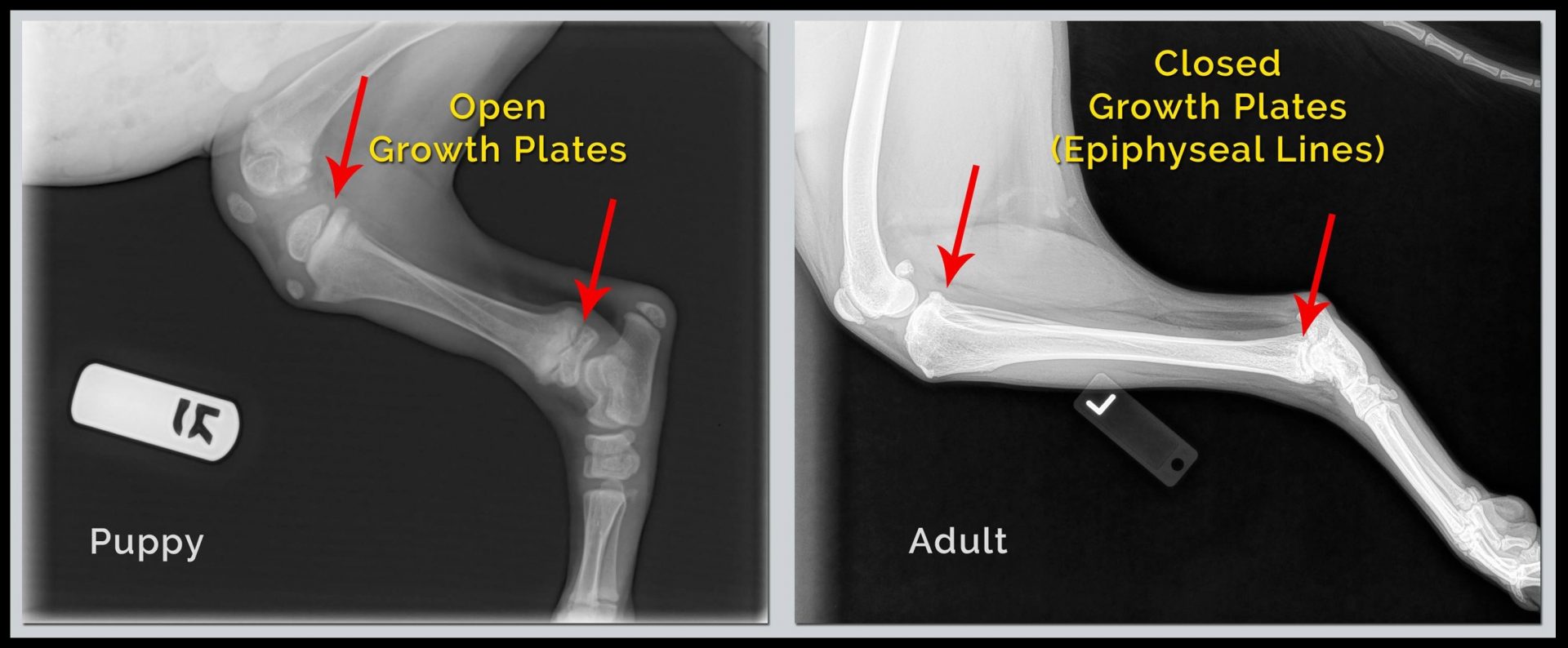Laurie's Blogs.
Apr 2024
What new in the literature pertaining to canine growth plates?

By request, and because it’s a good idea, I decided to do a wee search on one topic to see what new research was in that area. For this blog, I chose GROWTH PLATES. Let’s dive in!
1. What happens to leg length when you UNILATERALLY fuse the distal femoral epiphysis in 10 week old puppies? (Forgive this first study, in that it’s not NEW! Ha ha!)
Wagner SD, Desch JP 2nd, Ferguson HR, Nassar RF. Effect of distal femoral growth plate fusion on femoral-tibial length. Vet Surg. 1987 Nov-Dec;16(6):435-9.
- Femoral length deficit of 23.5% without clinically detectable alterations in gait up to 42 weeks after surgery.
- Compensatory hyperextension of the stifle joint & the ipsilateral tibia showed significant acceleration in longitudinal growth.
- Combined femoral-tibial length at necropsy was still significantly shorter in the treated leg than in the control leg despite the increased tibial growth.
- Neither of the other two femoral growth plates produced any significant compensatory increase in length after fusion of the distal growth plate (unlike other animals).
- Femoral condyles of the treated legs rotated caudally and degenerative joint disease developed in all stifle joints of the treated legs.
- No contralateral limb abnormalities were evident radiographically.
2. What are the typical demographics, management & outcomes of physeal fractures in young dogs?
Currie AJ, Meeson R. Demography, management and outcomes of canine physeal fractures (103 cases). Vet Rec. 2022 Dec;191(12):e2279.
- Fractures of the distal humerus were the most common followed by proximal tibial fractures.
- Outcome was fair for most fractures at all locations, aside from the distal humerus, where most outcomes were good.
- At radiographic follow-up, most physes were closed at all locations aside from the distal tibia.
- Implant removal to allow ongoing physeal growth was performed in only (17%) fractures, in (83%) implant removal related to complications.
3. Does repair of tibial tuberosity avulsion impact tibial plateau angle in young dogs?
Park S, Goggin K, Morton JM, Hall DA. The effects of tibial tuberosity avulsion and repair on tibial plateau angle in dogs. N Z Vet J. 2024 Mar;72(2):90-95.
- The mean TPA on the operated stifle was 6.4° less than on the non-operated stifle.
- For surgery between 4 and 8 months of age, TPA at maturity increased by 2.7° for each additional month of age at surgery.
- Based on this study, surgical repair of tibial tuberosity avulsion in skeletally immature dogs is associated with a smaller TPA at skeletal maturity.
- However, causality cannot be established from this cross-sectional study, and this association may be because stifles with a smaller TPA are predisposed to tibial tuberosity avulsion.
Laurie’s Thoughts
These are three studies that simply inform your brain about what goes on in a limb after an injury or compromise to a growth plate in a juvenile dog. While these studies might not be REHAB-SPECIFIC, I do think they are very interesting in that they might prove to be useful ‘retrospectively’ to make sense of dogs that present for rehab ‘later on’ in life! OR, to be able to explain to an owner what they might expect to occur in their puppy if it has a growth plate injury.
Do you feel a wee throbbing in your skull? That’s your brain growing bigger! You’re welcome!
Until next time… Cheers!
Laurie


